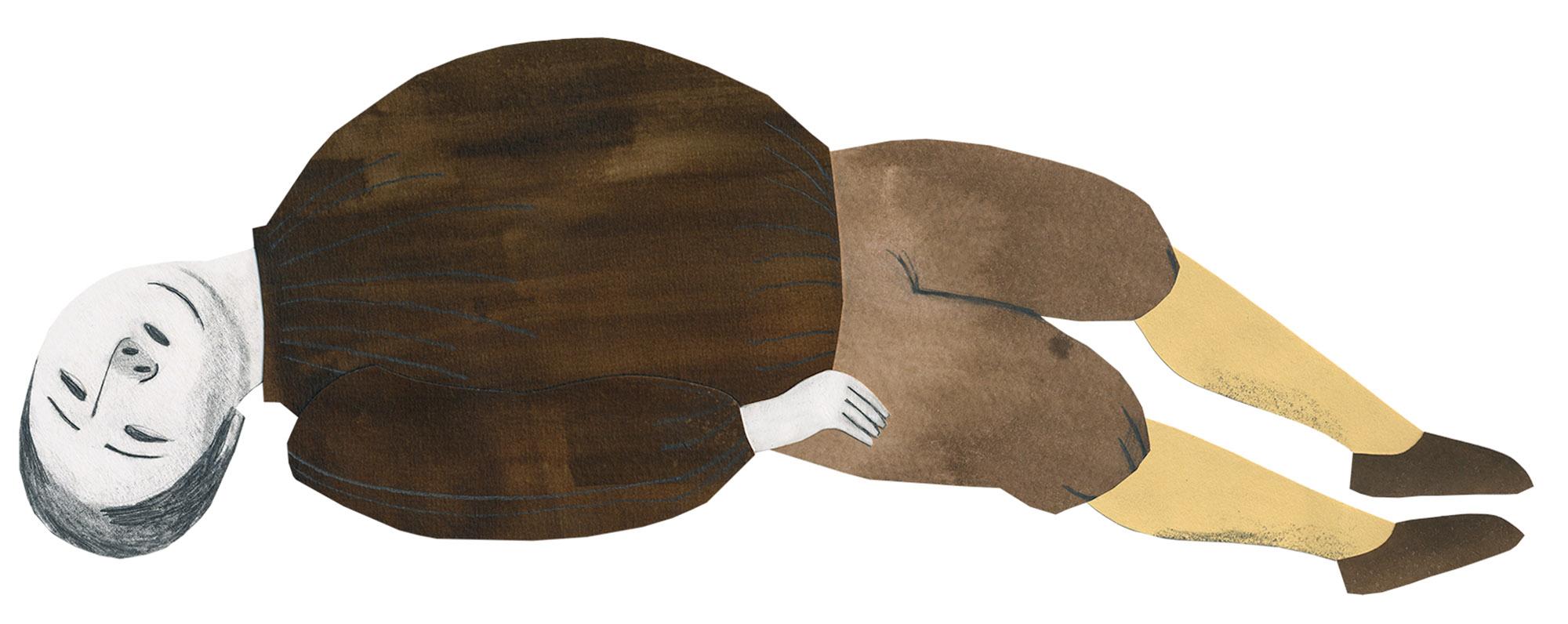Fat Matts - the petrified mineworker
Working down in the Falun mine 350 years ago was hard and dangerous.
To get down to a depth of 147 metres in the mine, one could take the ladder or stand on the edge of a barrel as it was hoisted down. The barrel was wet and slippery, and the miners’ shoes were bad and often worn.
Margareta Olsdotter was a kind young widow who looked after her old father. One Sunday, after the sermon she started talking to local miner Fat-Matts. Fat-Matts and Margareta started dating and fell head over heels in love. The priest told everyone in Falun that they would soon be married.
One evening, when Fat-Matts went to meet Margareta and her father he found his workmate and friend Per, drunk outside a tavern. “But Per, you were supposed to be lighting the evening fire in the mine! What will happen now?” So the kind Fat-Matts ran to the mine to do the job that Per should have done. Fat-Matts climbed down with a torch in his mouth. But suddenly, stones began to fall from the walls and roof of the mine. Fat-Matts was injured and caught between the stones. No one noticed that Fat-Matts was trapped.
That evening Margareta waited in vain for Fat-Matts to return. She searched everywhere. She was terribly upset. “Fat-Matts, where are you?” she cried.
Forty-two years later, on 2 December 1719, mining began in the Mårdskinn shaft. When the miners broke through the wall and the water in the shaft poured out, a dead man in old-fashioned clothes was found. The body appeared fresh after lying in the vitriolic water. They took the body up to the ground surface and showed him to everyone, although no one recognised him and no one had missed anybody either.
Margareta, who was old by then, heard tell of this, and she rushed to the mine where she immediately recognised Fat-Matts. “Ohhh, my beloved Fat-Matts!” No one believed her. She was old and he was a young man. The vitriolic water in which Fat-Matts had lain had preserved him as he once was.

“Now you will be put in a Christian grave!” “No, he will be a tourist attraction,” said those in charge. For thirty years the dead body of Fat-Matts was displayed to tourists and became very famous. But he soon started changing and his skin became hard and blackish, almost like stone. In the end all that was left were a few remains of bone and a skull, which looked roughly like this. But finally, after some hesitation, in 1930, the remains of the body were buried at Stora Kopparberg Church. The gravestone, which you can go and see, reads: “In memory of the miner Matts Israelsson who died working in Falun Mine in 1677.”
